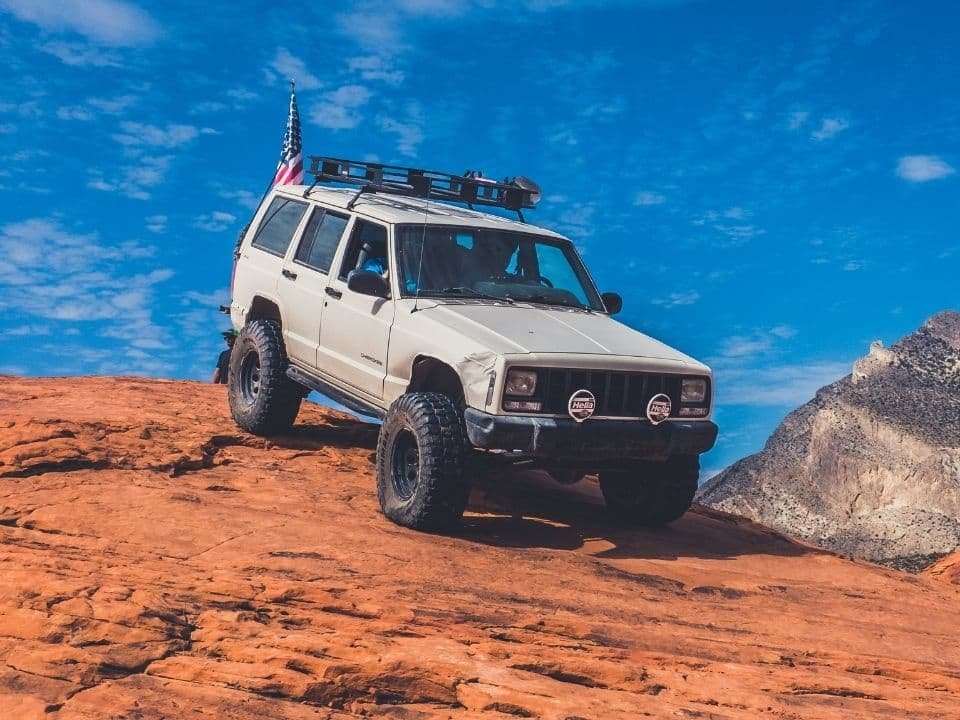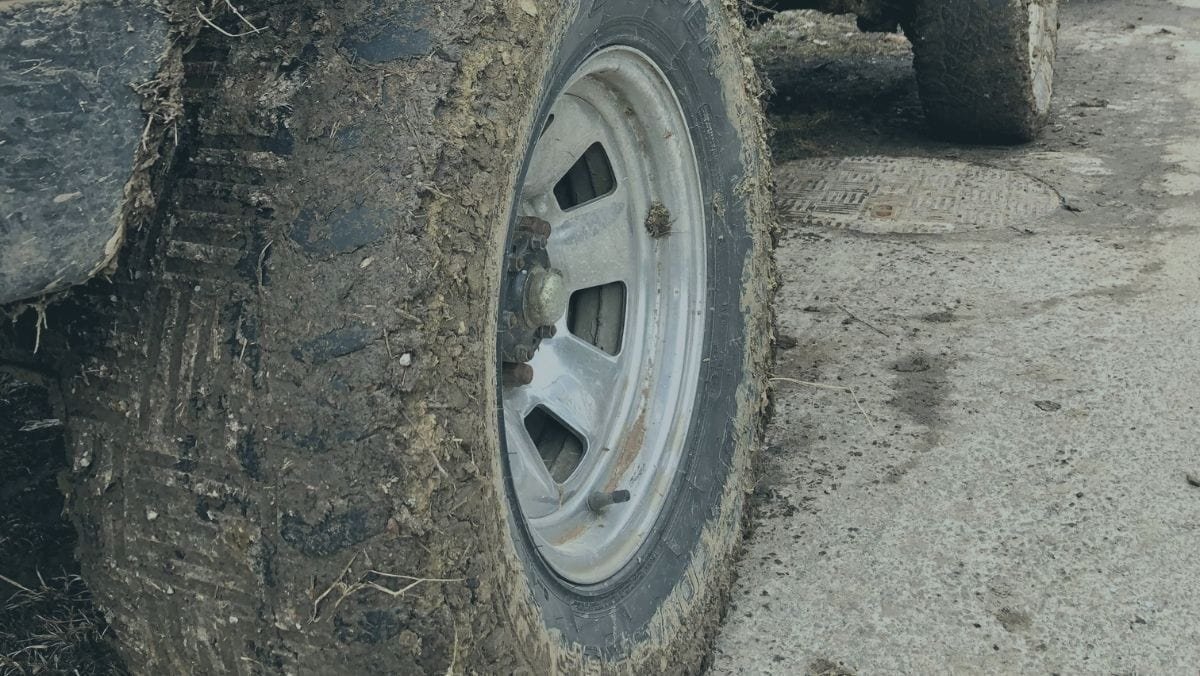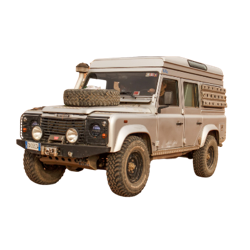When it comes to choosing new tires and wheels for your vehicle, having a good understanding of wheel offset can come in handy. But if you don’t happen to work with wheels frequently, you might not know what wheel offset means.
For beginners, understanding wheel offset can be a bit tricky. To tackle this issue, we have come up with this easy guide where we will cover everything you need to know about wheel offset.
Wheel Offset and Backspacing Explained
Wheel Offset
To put it simply, the distance between the mounting surface and the center of the wheel is known as the wheel offset. If you draw an imaginary line down the middle of the wheel barrel, then it will be the center of the wheel, known as the centerline.
Generally, ‘Offset’ is measured in millimeters from the centerline of the wheel. There are 3 types of wheel offset such as positive offset, negative offset, and zero offsets. Let’s learn about them.
Zero Wheel Offset
In short, when the backside of the mounting surface is exactly at the middle of the wheel (at the centerline), then it is called zero offsets.
There is nothing to worry about when you are using a wheel with zero offset. However, zero offset is not that common.
Positive Wheel Offset
Now, you know what a zero offset wheel is, but if the wheel mounting surface is outward of the centerline, then you are looking at a wheel with a positive offset.
Simply put, if the mounting surface is in front of the centerline and towards the front of the wheel, then the offset is positive.
To make it simpler for you, a wheel with a positive offset will have the hub mounting surface more towards the street side. As a result, there will be more backspacing.
Usually, when you mount tires on this type of wheel, you will find that the wheel and tire combo is inside the wheel wells.
Typically, most new OEM setups and front-wheel drive (FWD) rigs come with wheels with positive offset. Positive offset wheels are usually referred to as MED or HPO. MED stands for Medium Positive Offset and HPO refers to High Positive Offset.
As you might have already guessed, in vehicles with HPO, the wheels will be inside the fenders and will not stick out much.
Negative Wheel Offset
As the name of this category implies, it is exactly the opposite of positive offset. So, if the mounting surface of the wheel is behind the centerline, meaning more inward, then it is known as a negative offset.
In this case, there will be less backspacing. Also, wheels with negative offset will look like concave wheels.
Some of you might refer to them as ‘Dished’ wheels. Negative offsets are more common in most rear-wheel drive (RWD) cars.
At the same time, most off-roading vehicles and lifted trucks will come with negative offset wheels. Depending on the tires you are using, wheels with negative offset will stick out of the fenders.
Backspacing
While explaining different kinds of wheel offsets above, we have mentioned the term ‘Backspacing’ a few times.
But what does it mean? Simply stated, backspacing is the distance between the hub mounting surface and the inside lip of the wheel. Generally, backspacing is measured in inches.
Why Does Wheel Offset Matter?
Understanding wheel offset is very crucial because it can make or break your tire and wheel fitment. At the same time, a wheel with the wrong offset can be dangerous for your vehicle.
So before purchasing a set of new rims or tires, you should be familiar with wheel offset.
Normally, the type of offset you are going to need will depend on the width of the wheel you want to mount and your rig. For example, if you need to mount wider wheels than the OEM ones on your vehicle, then you will need to decrease the offset.
Why? Because if you don’t, then the new wider wheel would stick out further than the OEM ones. That means it will start to bump on the parts of your vehicle or even obstacles on the road.
So by decreasing the offset, you are moving the wheel inward of the line. That way it will not be extended out and will not affect your driving experience.
We have already mentioned that most of the front-wheel drive vehicles come with a positive offset.
If you change the offset on front-wheel drive vehicles, then it will affect the braking, acceleration, steering, handling, and even the scrub radius.
On top of that, a very high positive offset will extend the wheel out a bit, almost filling the wheel well but not crossing it. This will actually give your vehicle a marvelous look.
But when you will be changing the offset on an RWD (rear-wheel drive) vehicle, it will affect the steering and the scrub radius of that rig.
In this case, the majority of the RWD cars come with a negative offset. So, changing the negative offset will not affect the acceleration and braking.
A negative offset will offer a ‘dished’ yet unique look on the wheels of your vehicle. Normally, many off-road and lifted rigs come with negative offset wheels.
So you can see that you need proper offsets if you want the best driving experience. In addition, it also ensures that the tire and wheel will not rub against the brakes, suspension, fenders, bumpers, and other parts of the vehicle.
Along with that, the right offsets also improve vehicle stability, handling, and don’t interfere with the braking system. So, wheel offset matters for your safety as well.
Drawbacks of Too Much Positive Offset
- Too much positive offset might end up in poor handling
- It can make your car unstable
- There will be issues regarding the brake parts
- The tires could fail
- The tires could rub against the suspension or the chassis
- There could be extensive damages from the inner side of the wheel
Drawbacks of Too Much Negative Offset
- Similarly, a negative offset could also result in poor handling
- There could be steering wheel kick-back
- There will be immense pressure on the suspension system
Different Wheel Offset with Winter Tires?
Many overlanding enthusiasts want to know whether they need different wheel offset with winter tires or not. Typically, it will depend on the size/width of the tire, your vehicle, and the current wheel.
As a result, to get an accurate answer to this question or to choose a new wheel and tire combination, make sure to contact an expert for professional advice.
For example, if you have opted for a wider winter tire and you want to keep it inside the fender, then you have to use a positive offset wheel.
Make sure, when getting new wheels that the difference between the previous offset and the new offset should be no more than 5 millimeters.
Also, you should consider the backspacing if the new wheels are wider than the previous ones. Likewise, you should not cross the load capacity while getting a new set of wheels.

Why Is Wheel Offset Important For An Off-road Vehicle?
We have already explained the importance of the wheel offset above. All those above-mentioned points are applicable when it comes to the importance of wheel offset for an off-road vehicle.
So, if you want to achieve good vehicle stability and no interference with the braking system, you need the right wheel offsets.
Most off-road rigs are equipped with different types of tires like mud terrain tires, all-terrain tires, or trailer tires. Meaning, you will have to determine the right offset for your off-road vehicle.
Wheel offset is also important so that there are no rubbing or clearance problems while turning on rough terrains.
FAQ
Does Wheel Offset Matter?
Obviously. An incorrect offset could result in disaster, whereas a right offset will offer a better driving experience, handling, steering, acceleration, and a lack of interference with the brakes.
Is Wheel Offset Important?
Definitely. With the right wheel offset, there will be no clearance or fitment issues and no bumping against different parts of the vehicle.
A proper wheel offset will also add better vehicle stability. On top of that, both positive and negative offsets provide a unique eye-catching look to your vehicle.
What Is The Point Of Offset Wheels?
Getting the right offset wheels can come in handy if you want to change the look of your vehicle if you wish to improve the vehicle stability/handling, or avoid clearance issues, and more.
Do Negative Offset Wheels Stick Out?
Yes. Depending on your vehicle, tire, and the wheel, negative offset wheels stick out from underneath the vehicle to the street side, because the mounting surface of negative offset wheels is located inward of the centerline (towards underneath of the vehicle).
In fact, many people use negative wheel offset for giving their vehicles a more aggressive look, as the wheels tend to stick out of the fenders.


